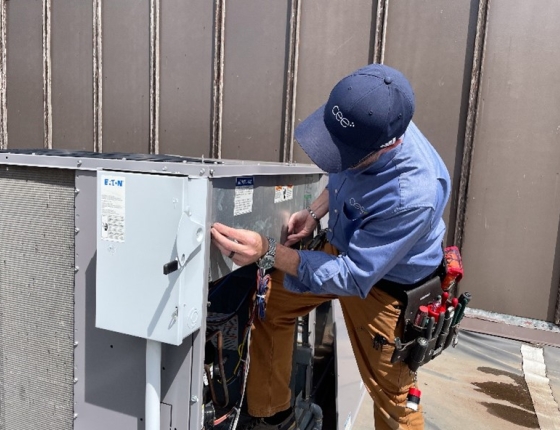With winter around the corner, you may be prepping your business by signing a plowing contract and stocking up on sidewalk salt. But have you considered checking on the health of your HVAC system? You don't want to find out in the middle of the first cold snap that your rooftop unit can hardly keep up. A fault in your facility’s HVAC system can lead to disruptions and discomfort for employees and customers and carry costly energy bills and repairs. Here are some things you can do this fall to avoid maintenance later and keep your facility’s HVAC system running smoothly all winter long.
Before it gets too cold, test it out! Give your furnace a trial run when the outside temperatures are still moderate. Temporarily set your heat 5 degrees higher and see if your furnace can handle the increased load. If it can easily increase the room temperature during this test, then it should be able to hold your regular desired temperature once the snow flies.
Make sure your equipment air filters are clean. Restricted airflow from a plugged filter could trip a high-temperature safety switch in your furnace that requires a manual reset. Restricted airflow also makes the blower motor work harder, which increases energy costs and wear and tear on your equipment.
Program your thermostats to setback 5–10 degrees during unoccupied times. The rate of heat transfer, which is how quickly heat leaves a space that's intended to stay warm, increases as the temperature outside gets colder and there is a greater disparity between it and the temperature inside. Setting thermostats back 5–10 degrees during unoccupied hours means your furnace won’t have to work as hard to offset the cold outdoor temperatures. Learn more about how thermostat setbacks can help you save energy and lower heating costs.
Check your outside air intake level. Outside air intake system components can malfunction and cause a greater amount of air to be introduced to your building than designed. When outside temps are at extremes, this can result in a furnace that's unable to sustain the load. Excessive outside air entering your HVAC airstream through a manual damper or economizer damper system will significantly impact the runtime of your furnace and increase your energy costs.
Want to get started? CEE’s HVAC experts are here to help Xcel Energy commercial customers in Minnesota find energy-saving HVAC solutions tailored to their building and budget. We provide free, no obligation assessments, free ecobee smart thermostats, and rebates covering up to 60% of project costs.
